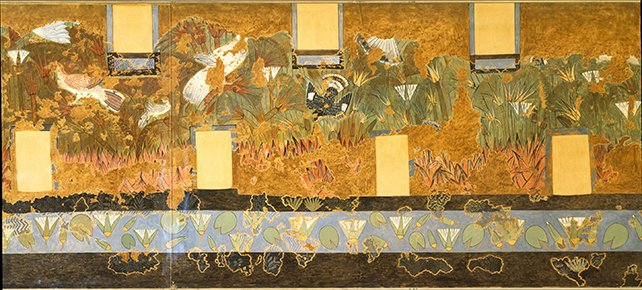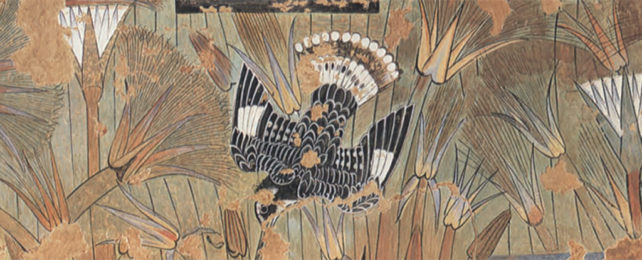Throughout the ages, artists have turned to nature for inspiration. Scientists often use such depictions of plants and animals to gain insights into ecosystems as they were in the past.
This is, of course, assuming the artist's intent is to capture the scenery faithfully. A new analysis of a series of 14th century BCE Egyptian paintings calls into question whether some artists might have indulged in a little artistic license from time to time.
Researchers from the Oxford University Museum of Natural History and the University of Cambridge in the UK argue the rock pigeons depicted in the artwork wouldn't have been native to the papyrus marshes depicted in the paintings. This, and other oddities in the paintings emphasize a need to be critical when viewing historical art works as records of biology.
The art in question is part of a series discovered at the Amarna site on the east bank of the Nile, in modern day Minya. Excavations conducted in 1924 revealed a palace featuring several lavishly decorated rooms that include numerous plaster panels illustrated with natural scenes in stunning detail.

"They have since come to be regarded as masterpieces of ancient Egyptian art," write the researchers in their published paper. "Featured in these paintings are some of the most skillfully rendered and naturalistic images of birds known from Dynastic Egypt."
Here the team looked at artwork in what's known as the Green Room, a place most likely used for rest and relaxation, if not occasional socializing and music playing.
Some birds, including the pigeons and kingfishers, had already been identified, but the researchers were able to expand on the catalogue of known animals by using high-quality copies of the artwork and modern ornithological records. Shrikes and wagtails were among the new birds identified in this analysis.
The study also notes that migrant birds were marked with a triangle, perhaps a clue for ancient birdwatchers and suggesting the artwork depicts a particular season. The researchers are hoping that their findings provoke further discussions of the art.
"The art of the Green Room has not received as much attention as you would perhaps expect," says archaeologist Christopher Stimpson, from the Oxford University Museum of Natural History. "This may have been because the original plaster panels did not survive well."
The researchers argue the ambiguity artistic license can introduce warrant caution in interpretation. It's possible that the birds were attracted to the area by human activity, as happens in urban areas today. Yet there are no actual people in the scene, so it may be that the rock pigeons were introduced to make the painting seem wilder and more untamed.
"While the artwork of the Green Room is an exemplar of naturalistic execution, it should not be regarded as a dedicated ornithological treatise," the authors note.
Other research has suggested that the artworks across the building as a whole represent an attempt, together with the architecture of the structures, to blend the internal and external environments and establish a connection with nature.
Spiritual elements to the paintings can't be ruled out either, considering how closely associated birds were to culture and religion in ancient Egypt. Most of all though, it seems the artwork was designed to encourage peace and rest.
"In the Green Room, the atmosphere was likely enhanced by the visions of nature," says Stimpson. "The calming effects of the natural world were as important then, as they are more than ever today."
The research has been published in Antiquity.
